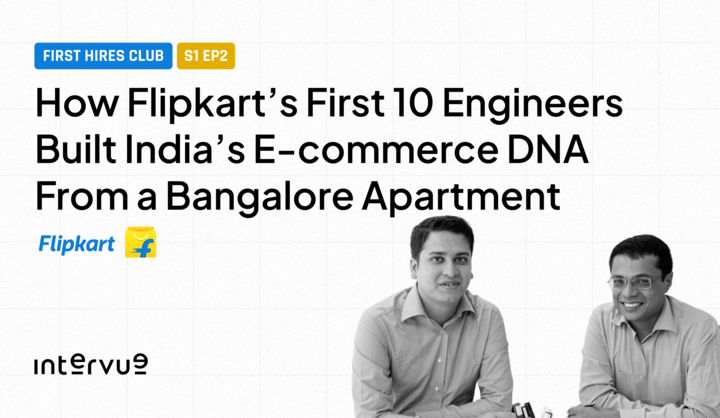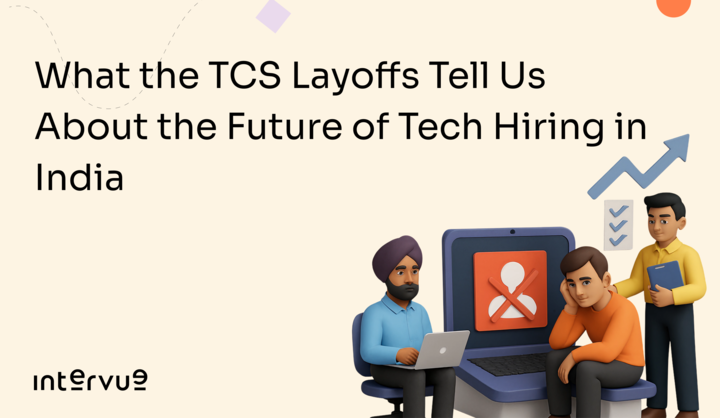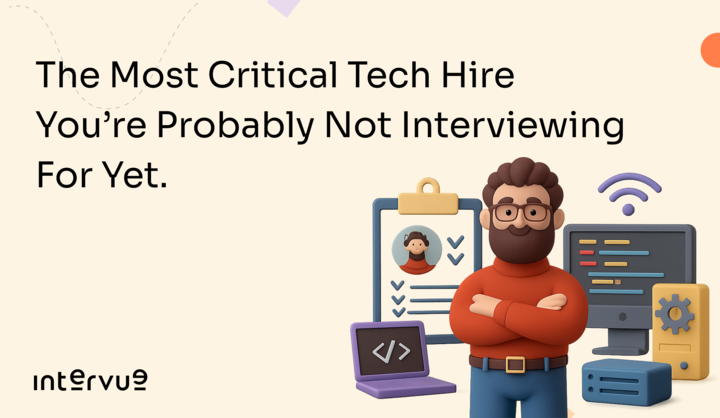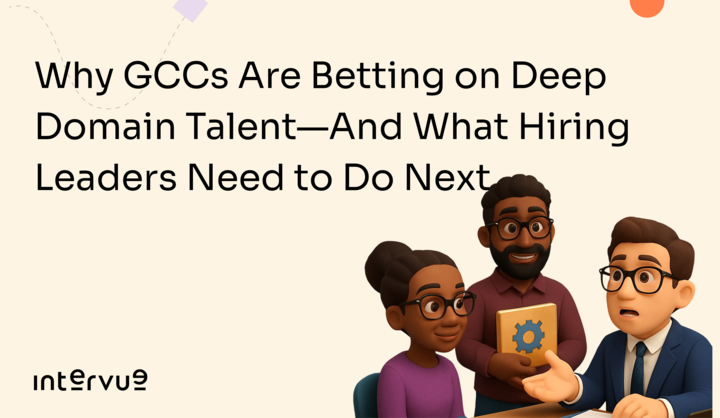Season 1, Episode 1: The First Backend Hire at Zepto Built More Than Code — He Built the SLA Culture
When Zepto launched with its bold promise of 10-minute grocery delivery, it wasn’t just building an app. It was building a system, one that had to deliver reliably, at scale, and under pressure.
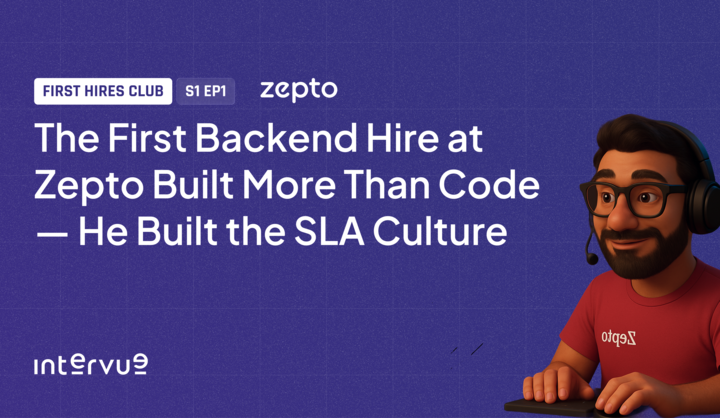
At Intervue, we’ve interviewed enough engineers to know this: early hires at fast-growing startups don’t just write code, they set the tone.
When Zepto launched with its bold promise of 10-minute grocery delivery, it wasn’t just building an app. It was building a system, one that had to deliver reliably, at scale, and under pressure. And somewhere in those early days, a backend engineer stepped in and built more than just endpoints.
They built the foundations of an SLA-first engineering culture.
This is the story of that invisible architecture, the one that made sure your cornflakes showed up before your kettle boiled.
The Real Challenge Behind 10-Minute Delivery
It’s easy to get caught up in Zepto’s front-end simplicity; open the app, pick what you need, and it shows up in minutes. But the backend complexity powering that experience is intense.
Orders are routed to the nearest dark store, inventory is checked in real-time, pickers are guided through hyper-efficient warehouse layouts, and delivery partners are matched based on proximity and familiarity with the locality.
Now imagine doing this hundreds of times per minute, across dozens of cities, without hiccups.
That kind of reliability doesn’t happen by accident. It’s designed and likely, it was one of Zepto’s earliest backend engineers who made that call from the start.
SLAs: The Invisible Backbone of Quick Commerce
When we say “SLA culture,” we’re not talking about the formal documents you'd find in a vendor contract. We’re talking about the kind of internal discipline where uptime, latency, and system health are baked into every decision.
For a company like Zepto, here’s what that probably looked like in practice:
- Backend services with sub-200ms response goals.
- Inventory syncing that tolerates failure, but never silently.
- Alerting systems that separate noise from real incidents.
- Failovers were designed before the first major outage happened.
This kind of thinking isn’t just technical, it’s cultural. It creates a mindset where “working” isn’t good enough. Systems need to be observable, fault-tolerant, and fast. Because a 5-second delay isn’t a nice-to-have, it’s a lost customer.
A Business Model That Demands Precision
Zepto isn’t just running a logistics company. It’s operating hundreds of micro-warehouses, each with strict SLAs around packing times, inventory freshness, and order dispatch windows. As of now, more than 150 of these dark stores are being run by franchise partners, with plans to scale to over 1,200 by early 2025.
Franchisees are incentivized based on how well they hit service-level benchmarks: packing 90% of orders within 2 minutes, minimizing damage rates, and keeping stores running without unplanned shutdowns. These aren’t just ops KPIs; they are backend realities.
If the order-routing system lags, if inventory APIs fail, or if location-based assignments break, those franchisees take the hit. So from day one, the backend systems had to work like clockwork.
That requires engineers who think in trade-offs, not tickets. Engineers who ask: “What happens when this fails?” instead of “Does this pass QA?”
Founders Who Hire for Systems, Not Just Skills
Let’s be honest, the first few hires at a company like Zepto are rarely made through a careers page. They’re often made through networks, based on trust. Maybe someone who had scaled infra at Swiggy. Or built high-availability systems at Amazon.
But what matters most isn’t where they came from. It’s how they thought.
Zepto didn’t need someone who could write a CRUD API and call it a day. They needed someone who could look at a business goal like 10-minute delivery and design a backend that could support it under load, across time zones, through growth.
That’s not a job title. That’s a mindset.
What This Means for Other Founders
If you’re a founder hiring your first backend engineer, the lesson is clear: don’t just hire someone who can build the product. Hire someone who can build the system that the product will rely on.
Look for engineers who:
- Talk about trade-offs between consistency and availability.
- Have a strong opinion on observability.
- Bring up failover strategies without being asked.
- See infrastructure as part of product quality.
At Intervue, when we conduct backend interviews, we look for the moment when an engineer shifts from:
“I can build that API” to “What’s our uptime goal on this service? How do we monitor failure?”
That’s exactly the shift Zepto had to embed early on.
By mid‑2024, Zepto was grappling with high latency and performance bottlenecks as its business scaled toward an annualized revenue of US$1.5 billion. Around that time, the engineering team made a bold infrastructure decision: they migrated from a monolithic PostgreSQL + Redis setup to a modern–based microservices architecture. (MongoDB Atlas)
The results were dramatic:
- 40% reduction in latency on critical APIs
- 6x more traffic capacity without degradation
- 14% improvement in page load times, leading to better conversion rates and smoother UX
These gains weren’t just backend wins—they were business enablers. A reduction in latency meant faster cart updates, smoother checkout flows, and fewer abandoned orders. Increased traffic tolerance meant Zepto could scale from hundreds to thousands of dark stores without rebuilding core infra from scratch.
It also shows that the SLA culture wasn’t just a philosophy. It was a set of practical trade-offs, constantly tested, benchmarked, and optimized.
Use Intervue to Assess Real-World Problem Solving — Not Just Code
Zepto’s first backend hire likely never said, “I’m here to build a culture.” But they did — through the way they wrote code, made architecture decisions, and responded to early incidents.
That’s the kind of talent you want on your early team. And that’s exactly what Intervue helps you hire.
Our platform is designed to simulate real-world scenarios, structure interviews around system thinking, and give you clarity on whether someone can build more than just features.
Because if your business depends on speed, reliability, and scale, you need someone who’ll build your SLA culture from day one.
